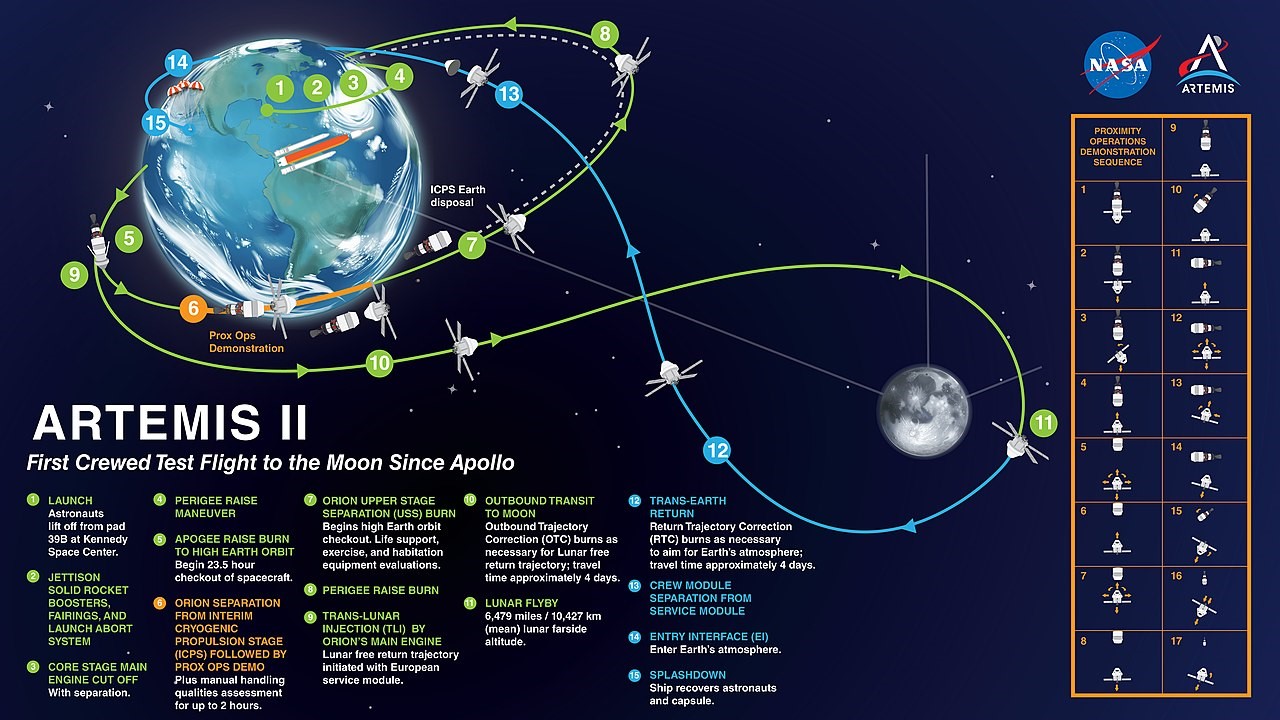





Disclaimer: Copyright infringement not intended.
Context
ARTEMIS: https://www.iasgyan.in/daily-current-affairs/artemis-program-10
Artemis II

|
PRACTICE QUESTION Q. Which of the following statements regarding the moon’s exploration is incorrect? a) Gravity Recovery and Interior Laboratory (GRAIL) spacecraft studied the Moon’s gravity. b) Apollo 11 was the first space mission to visit the Moon. c) Clementine was lunar robotic exploration mission of the USA. d) CAPSTONE is a part of the Artemis programme of NASA. 1. a, b and c 2. b only 3. b and c 4. All of the above. Correct Answer: Option 2 Luna 1 was the first spacecraft to reach the Moon, and the first of a series of Soviet automatic interplanetary stations successfully launched in the direction of the Moon. Clementine was a joint space project between the Ballistic Missile Defense Organization and NASA, launched on January 25, 1994. Its objective was to test sensors and spacecraft components in long-term exposure to space and to make scientific observations of both the Moon and the near-Earth asteroid 1620 Geographos. CAPSTONE’s primary mission is to pioneer a new and challenging lunar orbit in order to help inform future operations for NASA's new lunar space station and the rest of the ARTEMIS program. |






© 2025 iasgyan. All right reserved